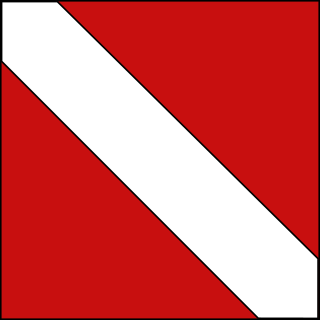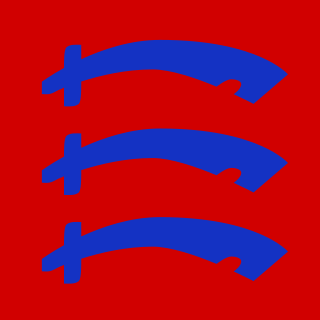
The 32nd Division was an infantry division of the British Army that was raised in 1914, during the First World War. The division was raised from volunteers for Lord Kitchener's New Armies, made up of infantry 'Pals battalions' and artillery brigades raised by public subscription or private patronage. The division was taken over by the War Office in September 1915. It served in France and Belgium in the trenches of the Western Front for the duration of the war. It saw action at the Battle of the Somme, the Pursuit to the Hindenburg Line, the Defence of Nieuport, the German spring offensive, and the Allied Hundred Days Offensive beginning at the Battle of Amiens. After the Armistice it marched into Germany as part of the Army of Occupation.
61st Brigade was an infantry formation of the British Army during the First World War. It was formed in September 1914 as part of the new army also known as Kitchener's Army and was assigned to the 20th (Light) Division, serving in the trenches of the Western Front. It was reformed as a motorised infantry brigade in Italy during the Second World War.

152nd Infantry Brigade was a formation of Britain's Territorial Force/Territorial Army that was part of 51st (Highland) Division in both World Wars. From its origins in the 19th Century Volunteer Force it was based in Inverness and was composed of Highland battalions. It served on the Western Front in World War I, and after it was captured at Saint-Valery-en-Caux early in World War II it was reformed from its 2nd Line and saw action in North Africa, Sicily and North West Europe.

154th Infantry Brigade was a formation of Britain's Territorial Force/Territorial Army that was part of 51st (Highland) Division in both World Wars. From its origins in the 19th Century Volunteer Force it was based in Stirling and was composed of Highland battalions. It served on the Western Front in World War I, and after it escaped from France early in World War II it was reformed from its 2nd Line and saw action in North Africa, Sicily and North West Europe. It continued serving postwar until the reduction of the Territorial Army in the 1960s.
The Durham Light Infantry Brigade was formed in 1902 to command the part-time Volunteer battalions of the Durham Light Infantry (DLI). Previously these had been in a combined Tyne and Tees Brigade with battalions of the Northumberland Fusiliers. It consisted of the 1st–4th Volunteer Battalions of the DLI, which were renumbered as the 5th–8th Battalions when the Volunteers were subsumed into the Territorial Force (TF) under the Haldane Reforms of 1908. Consisting of 6th–9th Battalions, it became part of the TF's Northumbrian Division. During World War I it was numbered as the 151st Brigade on 14 May 1915, when the division became the 50th (Northumbrian) Division. The TF also raised 2nd Line units and formations, and the 190th Brigade was formed in 63rd Division. The 1st Line battalions adopted the prefix '1/'

The 140th Brigade was an infantry brigade formation of the British Army's Territorial Army (TA) that had its origins in a South London Brigade of the former Volunteer Force. It served on the Western Front in the First World War and was recreated during the Second World War where it served only in the United Kingdom as a training formation.

The 141st Brigade was an infantry brigade of the Territorial Army, part of the British Army, that served in the First World War and remained in the United Kingdom throughout the Second World War.
The 142nd Brigade was an infantry brigade of the Territorial Army, part of the British Army, that served in the First and the Second World Wars, and remained in the United Kingdom throughout the latter.
41st Brigade was an infantry formation of British Army during World War I. It was formed in August 1914 as part of the New Army, also known as Kitchener's Army, and was assigned to the 14th (Light) Division, serving on the Western Front. It was sometimes known as the 'Greenjacket Brigade' because it was composed of battalions of the King's Royal Rifle Corps and the Rifle Brigade, whose full dress uniforms were Rifle green.
59th Brigade was an infantry formation of the British Army during World War I. It was formed in September 1914 as part of the new army also known as Kitchener's Army and was assigned to the 20th (Light) Division, serving on the Western Front. It was popularly known as the 'Greenjacket Brigade' because it was composed of battalions of the King's Royal Rifle Corps and the Rifle Brigade, whose full dress uniforms were Rifle green.
The 90th Brigade was an infantry formation of the British Army during World War I. It was raised as part of 'Kitchener's Army' and was assigned to the 30th Division. After the original formation was converted into a reserve brigade, the number was transferred to a brigade of 'Manchester Pals'. The brigade landed in France at the end of 1915 and then served on the Western Front for the rest of the war, seeing action at the Somme, Arras, and Ypres. Virtually destroyed during the German spring offensive of 1918, it was reconstituted in time to take part in the final battles of the war.
The 93rd Brigade was an infantry formation of the British Army during World War I. It was raised as part of 'Kitchener's Army' and was assigned to the 31st Division. After the original formation was converted into a reserve brigade, the number was transferred to a brigade of 'Pals battalions' from Northern England. The brigade was sent to Egypt at the end of 1915 but was recalled to France shortly afterwards and then served on the Western Front for the rest of the war. The brigade was shattered on the First day on the Somme, but later saw action at Arras, in the German spring offensive of 1918, and the final Hundred Days Offensive.
The 214th Brigade was an infantry formation of the British Army during World War I. It was raised as a second line brigade of the Territorial Force and initially assigned to the 71st Division for coast defence. Later it was reorganised as an all-arms brigade group for service in North Russia, but this was cancelled and it was reassigned to the 67th Division, a training and home defence formation, until the end of the war.
The 206th Brigade was a formation of the British Army during World War I. It was raised as a 2nd-Line duplicate of the Essex Brigade of the Territorial Force and formed part of the 69th Division. It served as a training formation in the United Kingdom without going overseas.

The 219th Brigade was a Home Service formation of the British Army during the First and the Second World Wars.
171st Brigade was a 2nd-Line infantry formation of the British Territorial Force raised during the First World War that served on the Western Front. The brigade's number was also used for deception purposes during the Second World War.

The 115th Brigade was an infantry brigade of the British Army raised for 38th (Welsh) Division during both the First and Second World Wars.

The 123rd Brigade was an infantry formation of the British Army during World War I. It was raised as part of the New Armies. After the original 123rd Bde was renumbered, a new brigade was formed and served with the 41st Division from 1916 to 1919 on the Western Front, in Italy, and with the British Army of Occupation in Germany.
The 121st Brigade was an infantry brigade formation of the British Army during World War I. Part of Lord Kitchener's 'New Armies', it served in the 40th Division on the Western Front. The brigade number was reactivated for deception purposes during World War II.

The 223rd Brigade was a Home Defence formation of the British Army in the First and the Second World Wars. It existed under several variations of the 223 Brigade title, and was eventually converted into an airborne formation.







